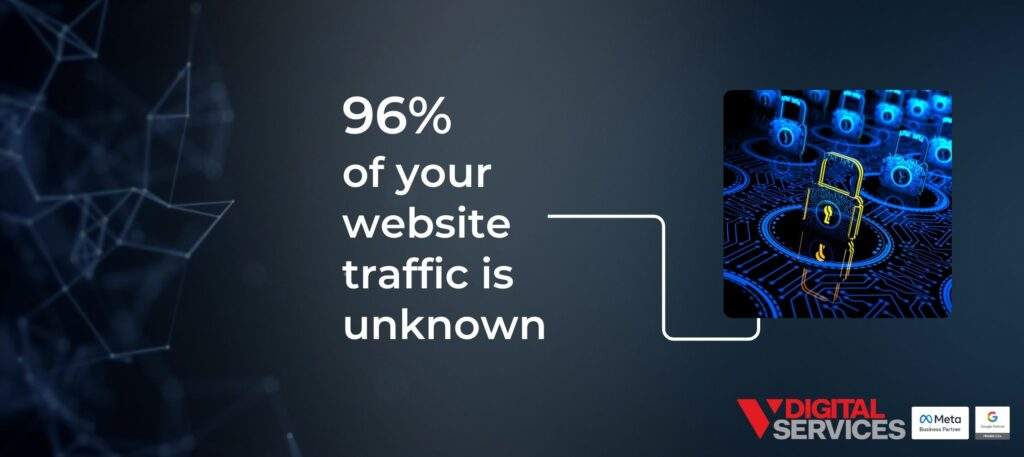Every day, businesses receive website visitors who remain anonymous—potential leads that never convert because companies lack the insights needed to engage them. Without understanding who these visitors are, marketing efforts can be inefficient and misdirected. The solution? A well-defined Ideal Customer Profile (ICP) combined with a first-party data strategy. This blog will guide you through defining your ICP and leveraging first-party data solutions like Prospect Hub to turn anonymous traffic into high-quality leads, helping you maximize your marketing potential.
What is an ICP and Why It Matters
Your Ideal Customer Profile (ICP) is a detailed description of the type of customer most likely to engage with your brand, make a purchase, and remain loyal over time. It’s essentially a blueprint that defines the characteristics of customers who will provide the most value to your business. A well-defined ICP helps businesses tailor marketing strategies, refine messaging, and optimize targeting for maximum efficiency. It acts as a compass, guiding your efforts in the right direction, ensuring that you focus your resources on those most likely to convert.
To develop your ICP, start by analyzing your existing customer base to identify common traits among your most valuable customers. Look at demographic data, purchase behaviors, and engagement patterns to determine what makes them ideal. Are there specific industries or company sizes (for B2B) that tend to buy your products or services more often? Do your customers share similar lifestyle preferences or face common challenges? Identifying these factors is key to understanding your ideal audience.
Conducting customer interviews, analyzing survey responses, and reviewing transactional data will provide you with deeper insights into your customer base. Once you’ve gathered this information, create a detailed profile that reflects your ideal audience. This profile should serve as the foundation for all your marketing strategies, ensuring that your efforts are directed toward the prospects most likely to convert.
How First-Party Data Strengthens Your ICP
Once you’ve established your ICP, the next step is refining it with actionable data. First-party data plays a crucial role in strengthening your ICP by providing insights based on actual customer behavior. First-party data includes explicit and implicit signals, such as purchase history, website interactions, and engagement patterns. Unlike third-party data, which can be less reliable and harder to verify, FPD is highly trustworthy because it comes directly from your audience’s interactions with your brand. It’s more ethical, actionable, and specific, making it a powerful tool for refining your ICP.
By analyzing first-party data, businesses can validate and fine-tune their ICP, ensuring that their targeting strategies are based on real customer actions rather than assumptions or generalized data. With more accurate insights, you can identify trends, detect shifts in behavior, and adjust your marketing strategies accordingly. This refined ICP helps businesses focus their marketing and sales efforts on prospects who are most likely to convert.
Turning Anonymous Website Traffic Into Identified Leads
One of the biggest challenges businesses face is that a significant portion of website visitors remain anonymous. These anonymous visitors are often potential leads, but without knowing who they are, it’s difficult to assess if they fit your ICP. This is where identity resolution tools, like Prospect Hub from V Digital Services, come into play. These tools help businesses identify anonymous website visitors by leveraging a world-class data cooperative.
When a visitor lands on your site, Prospect Hub collects data and matches it to a larger data warehouse. If an identifiable profile exists, you gain valuable insights into whether these visitors fit your ICP. This process enables you to make more informed decisions on whether to pursue these visitors as potential leads, or engage them through refined targeting and retargeting strategies.

Using Your ICP to Identify Top Leads
By integrating first-party data with your ICP, you can enhance your lead identification process and start focusing on those visitors who are most likely to convert. Businesses can:
- Compare Anonymous Traffic Against Their ICP – Analyze the behaviors and characteristics of anonymous website visitors to determine if they align with your high-value customers. Are they showing signs that they might be a good fit for your offerings?
- Prioritize High-Value Leads – Use first-party data to prioritize leads that match your ICP criteria. This allows you to focus your efforts on those who are most likely to make a purchase.
- Optimize Retargeting Strategies – Engage with anonymous visitors who fit your ICP through personalized ad campaigns and targeted outreach. By tailoring your messaging to their specific needs, you can increase the chances of turning them into high-quality leads.
- Enhance Sales Efficiency – Provide your sales team with actionable, data-driven insights that help them focus their efforts on the most promising prospects. This improves sales efficiency and shortens the sales cycle.
Unlock High-Value Leads with Prospect Hub
Defining your ICP is a strategic process that requires a deep understanding of your customers’ behaviors, needs, and preferences. First-party data is essential for refining these insights, tools like Prospect Hub can help bridge the gap between anonymous traffic and high-value leads. By identifying anonymous visitors who align with your ICP, Prospect Hub enables you to focus your marketing efforts on the right audience, turning anonymous website traffic into actionable, high-quality leads.
Image Credit: fotofabrika, Adobe Stock




